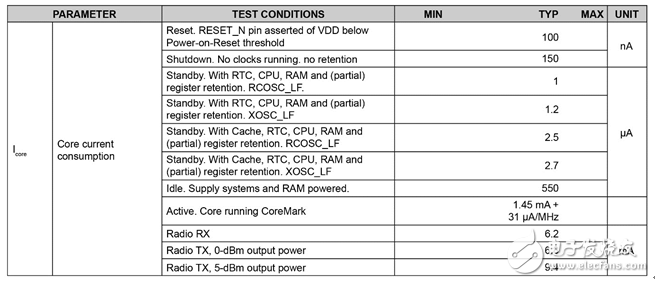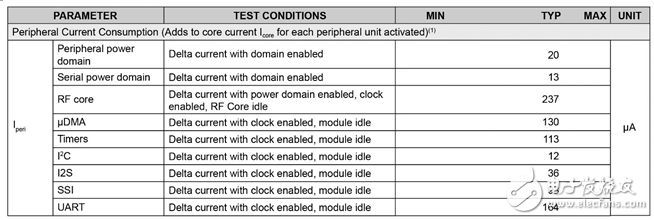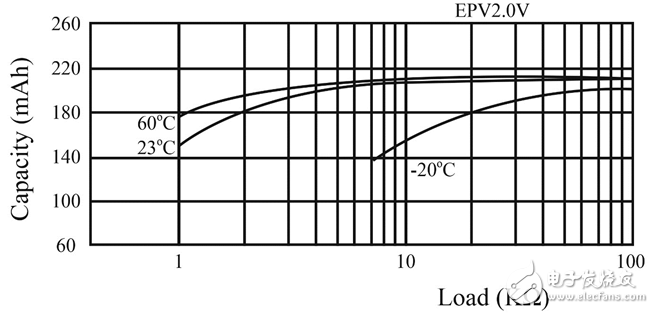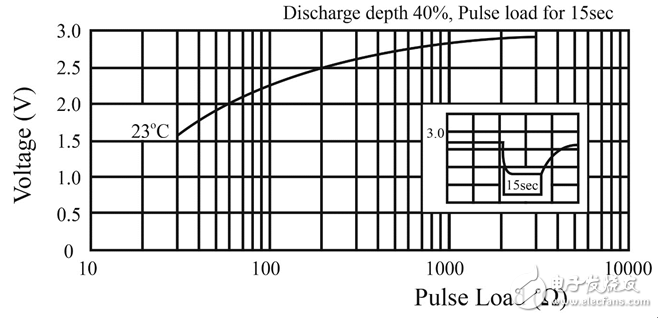The author of this article is Zhu Weidi, Sales Director, Greater China Region, e-Community
From the signage of bus stops to the complex industrial systems of networking, the design of most electronic systems has changed dramatically due to the Internet. Among them, the biggest change may be the introduction of sensor systems that collect data and pass it to the cloud.
These small "devices" are usually not connected to the mains, which means they must be powered by batteries or energy harvesting devices.
Energy harvesting devices are the most viable solution for many applications. If the device is designed for lower power consumption and the energy harvesting device can get more energy, the device is likely to run indefinitely.
However, this approach is not applicable to many applications due to limited energy access or excessive system energy requirements. In this case, the battery needs to be powered by the battery.
Unfortunately, batteries need to be constantly replaced, and the cost of replacing batteries is often higher than the cost of IoT devices themselves. Therefore, estimating battery life is critical.
Factors affecting battery lifeThe battery life of an IoT device can be determined by simple calculations: the battery capacity divided by the average discharge rate. Minimizing the energy used by the device or increasing the battery capacity will increase the battery life and reduce the total cost of ownership of the product.
Batteries are often the largest component of an IoT sensor system, and engineers can choose a small range. However, with a large number of processors, communication technologies and software algorithms, the system can be designed to achieve the required lifetime.
IoT processor sleep modeProcessors designed for IoT applications offer a variety of ultra-low power sleep modes.
Take the TI CC2650MODA wireless microcontroller as an example. Figure 1 shows the current consumption of the device under different operating conditions. There are 6 power levels from shutdown to active operation.

Unless the frequency of data sampling is very low, there is little benefit in shutting down the processor. And additional circuitry and code is needed to restart the processor, adding cost and complexity. In addition, standby mode current consumption is less than 3μA, battery discharge takes at least eight years: longer than many IoT devices, and almost reached the shelf life of CR2032 battery. Therefore, shutting down the processor completely is often useless.
It is important to choose the appropriate standby mode. The lowest power standby mode consumes about one-third of the highest power mode, but only saves very little processor space. While some IoT applications require the lowest power sleep mode, most applications choose to keep the cache to reduce the cycle time required to process the active mode.
The processing in the active mode needs to be balanced. Figure 1 shows that due to the CMOS technology used by this type of IoT processor, power consumption increases linearly with clock frequency. Therefore, a faster clock speed seems to mean a shorter battery life, but since the "basic" current is 1.45 mA, running the same algorithm at a faster clock speed requires a shorter wake-up time, which means slowing down the clock and Not cost-effective, but actually shortens battery life.
In addition, the wake-up time for switching from one mode to another is limited: for example, the CC2650MODA requires 151μs to switch from standby to active mode. At a maximum clock frequency of 48 MHz, it takes more than 7000 clock cycles to wake up the processor. For applications that require only a small amount of code, slow down the clock during wake-up to get longer code execution time to reduce power consumption and extend battery life. Similarly, minimizing the number of wake-up operations and performing as many tasks as possible before returning to standby mode can also extend battery life.
Modern IoT devices are very complex products that integrate many peripherals to enable single-chip solutions to meet different needs. However, IoT devices—especially simple sensors—do not require these complex functions.

Figure 2 shows the power consumption of the peripherals available in the TI CC2650MODA family. Although the current consumed by various devices is very small—only a few tens or hundreds of microamps—the ban on these devices can have a significant impact. A total of 318 μA can be saved if a serial connection is not required. Although it may not seem too much, this current change can have a significant impact on battery life.
Internet of Things communication technologyChoosing the right communication technology usually depends on the system requirements. Battery-powered IoT systems often require the use of RF links.
In the case of wireless communications, a larger range or faster data transfer rate typically consumes more energy, so the lowest power communication technology that meets these needs is often a wise choice.
For the Internet of Things sensor, there are currently several mainstream technologies. For example, LoRa technology can build low-power, long-distance wide area networks (WANs) that span several kilometers, while low-power Bluetooth (BLE) technology can only communicate over short distances, but consumes significantly less power. Another decision that must be made is whether to use on-chip devices or a separate chip to communicate.
Communication interface management is critical because even low-power communication technologies can quickly drain the battery and the processing requirements are usually higher than the RF stage.
In order to make maximum use of the capacity of the communication battery, many IoT systems only wake up the communication circuit when it has accumulated enough data to transmit.
Select sensors to maximize battery lifeSensors can have a major impact on the battery life of IoT systems. For example, resistance temperature detectors and thermistors can change their resistance with temperature. A simpler application with less precision can use a voltage divider, but a high precision system requires a current source, which requires more power. For many applications, an integrated temperature sensor such as the TI LM35DZ is a good solution: the device is accurate to ±0.25°C at room temperature and consumes only 60μA. Regardless of which sensor you choose, you need to be sure that you can only get power when you use them.
Battery technology for the Internet of ThingsThere is a problem with battery selection, and many battery specifications are very limited. In addition to physical size and output voltage, the only other parameter that is usually specified is capacity. Battery capacity is obviously critical because it determines the total amount of power available to IoT devices.
Battery quality has a major impact on capacity. Simply setting a model may risk the purchase of low-capacity, inexpensive equipment. This in turn reduces the battery life of IoT applications and introduces expensive battery replacement costs. It is also possible to use batteries made up of different chemicals: different chemical compositions can have a huge impact on battery life.
Many of the battery-supplied brief data sheets are easy to believe that the battery is a very simple device and the battery capacity is fixed, but this is not the case. For example, if the load requires more current, the lifetime will be significantly shorter. More importantly, for some applications, as the temperature drops, the capacity of the battery will be greatly reduced.
IoT applications use pulsed current. The processor and sensor can draw a few milliamps of short pulse current and then switch to low power mode for a long time. Using a pulsed current causes the output voltage to drop. Figure 3 shows that even a 2 mA pulse load will reduce the output of CR2032 from 3V to around 2.2V.

Engineers tend to pay more attention to the battery's power storage, ignoring its consumption. However, IoT applications often need to run on a single battery for many years, so the shelf life is critical. Most batteries only offer a shelf life of seven to eight years.
Conclusion: Maximizing battery lifeDeveloping battery-powered IoT devices requires rigorous engineering. While component selection is important, poor design can undermine the benefits of low-power processors. The key to extending battery life is to ensure that the processor is in as low-power standby mode as possible and to minimize the use of wireless communications.
In this context, Element14 has developed a calculator to help users quickly and easily predict the battery life of IoT systems (Figure 4). Users only need to enter parameters related to their processors, communication devices, sensors and batteries, as well as key details of software operation, the calculator can predict the battery life of IoT devices.

Editor's note
Please visit the Element14 news center https:// for more information and related imagery about this news.
about usElement14 is one of Premier Farnell's family of businesses. Premier Farnell is a global technology leader with over 80 years of quality service distribution for design, production, maintenance and repair solutions for technology products and electronic systems. As an 'electronics and development services distributor', Premier Farnell leverages its deep industry experience to provide strong support to a broad customer base of electronics enthusiasts, design engineers, maintenance engineers and procurement staff, as well as active with leading global brands and start-ups. Cooperate to jointly develop new products and bring them to market. The company also fully assists in the development of the industry in order to cultivate a group of outstanding contemporary and next generation engineers.
Premier Farnell is part of Avnet Electronics MarkeTIng, a component operator of Avnet Corporation (NYSE: AVT). Premier Farnell operates the Farnell element14 brand in Europe, the Newark element14 brand in North America, and the element14 brand in the Asia Pacific region. With a global supply chain of more than 3,500 suppliers, its extensive product inventory can predict and meet the needs of innovative customers across all regions.
For more information, please visit: http://
Our company`s current transformers have high precision,wide range,small volume and good linearity that can be used to the field of electronic watt-hour meter, electric energy metering, electronic detection.
Performance
â—Power frequency insulation strength:The insulation between the primary winding and the secondary winding and the ground part of the CT can bear 4kV power frequency voltage for 1minute
â—Interturn insulation strength:The secondary open circuit, the primary winding through the rated current 1min, no inter-turn damage in the transformer
â—The deviation is better than the industry standards and national standards
High Precision Linear Ct,Useful Current Transformer,Customized Current Transformer,Durable Current Transformer
Anyang Kayo Amorphous Technology Co.,Ltd. , https://www.kayoamotech.com